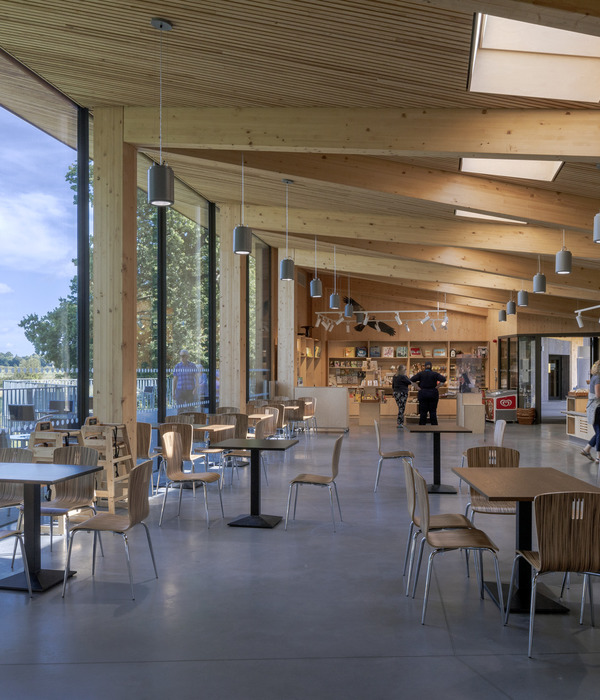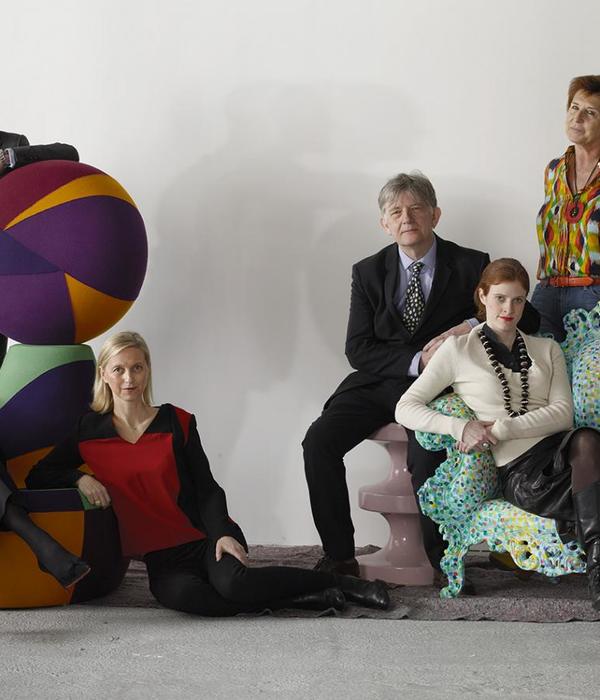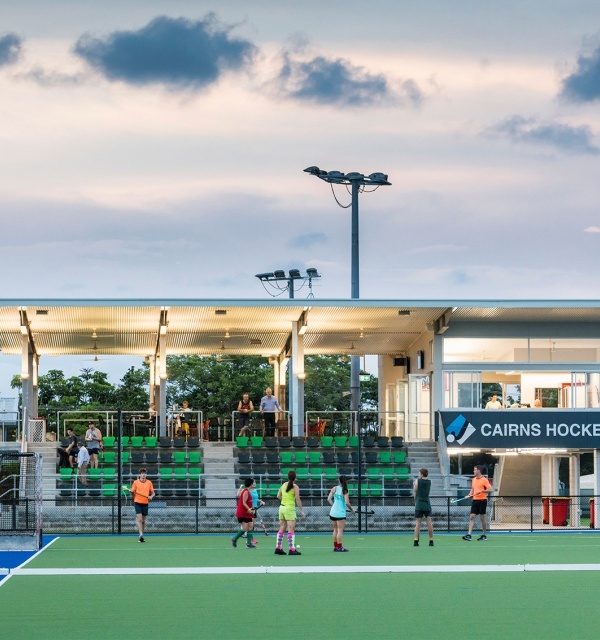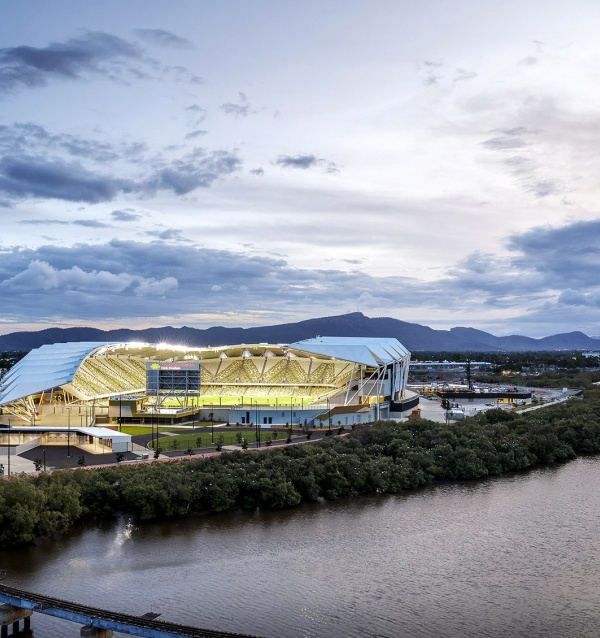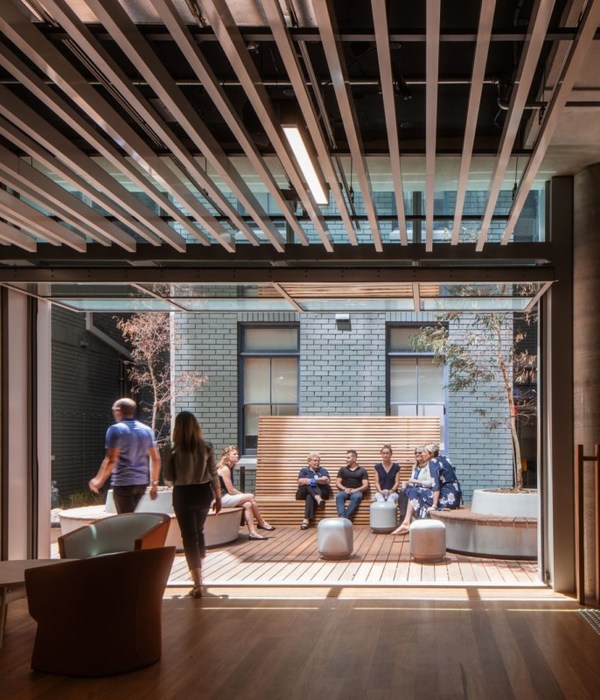在 1925 年至 1926 年间不到一年的时间里,根据Wilhelm Kreis的宏伟规划,位于德国杜塞尔多夫的Ehrenhof区域建成了一系列文化建筑。在人们的印象中,Kunstpalast博物馆以前有两个独立的侧翼。
Built within less than one year between 1925 and 1926 according to Wilhelm Kreis’ extensive plans, the Ehrenhof contains an ensemble of cultural buildings. The perception of the Kunstpalast was previously characterized by 2 existing separate wings.
▼博物馆外观,exterior of the museum© Stefan Müller
现在,两座建筑以共同的名称连接在一起。由于拆除了保留在 Kreis 外墙后面的原艺术宫,以及Ungers公司在九十年代初的新建工程,东侧的展览空间和西侧的收藏空间之间失去了平衡。新的展览空间位于低层门厅的东侧,藏品空间和临时展览空间之间的连接部分被拆除,建筑的两翼不再是一个整体。
▼一层平面,ground floor plan ©Sieber Architekten
Both buildings were now connected under a common name. The imbalance between the exhibition wing in the east and the collection wing in the west, resulting from the demolition of the original Kunstpalast, which remained preserved behind the Kreis façade, and the subsequent new construction by Ungers in the early noughties, was exacerbated by large areas of the collection wing becoming inaccessible to the public due to water damage and structural problems. With the additional orientation of the new exhibition wing in the lower foyer to the east and the partially removed connection between collection and temporary exhibition spaces, the two wings of the building were no longer perceptible as one unit.
▼改造后大厅,the hall after renovation© Stefan Müller
▼改造后门厅,new foyer after renovation© Stefan Müller
当建筑师于2017年开始规划新的Kunstpalast博物馆时,设计的目标旨在保证建筑的各个不同的区域都能成为一个生机勃勃的城市博物馆。建筑的室内外观要恢复与整体建筑群相称的统一性,但同时又不能彻底的抹去时间的痕迹。房间之间的关系被赋予了现代的,适宜的形式。
When we began planning the new Kunstpalast in 2017, our aim was to ensure that the building, with its different areas will now become a single museum in a lively urban location. The interior appearance of the building was to regain a unity that is appropriate to the overall ensemble, but without entirely destroying the traces of time. The relationship between the rooms is given a contemporary, appropriate form.
▼现代形式和传统材料结合,the combination of contemporary form and traditional material© Stefan Müller
▼公共区域,public area©Stefan Müller
▼咖啡厅,cafe©Stefan Müller
它不仅仅是一个由等级分明的主轴、主轴线和次轴线组成的回廊。相反,它是蜿蜒曲折的一系列不同大小的房间构成的序列,以确保方向以及视角的不断变化,并在其中精心地穿插着设计的亮点:大厅中连接各层藏品的新螺旋楼梯,两间新的门厅和阁楼。此外,还策略性的布置了主题鲜明的特别展厅,以其独特的尺度和美学为特征的儿童区域,以及针对性的向外开放的立面和向内打开的房间。
It is not just an enfilade with hierarchically defined dominants, main, and secondary axes. Instead, it is a meandering sequence of clearly defined rooms of different sizes, which repeatedly ensures a change of direction and perspective, in the course of which carefully curated highlights are to be found: The two halls with the new spiral staircases connecting the floors of the collection, the two foyers, and the belvedere. Further motifs encompass the strategic placement of thematically defined special rooms, bespoke children’s rooms characterized by their distinct scale and aesthetics, as well as the targeted opening of the façade to the outside and the rooms to the inside.
▼新螺旋楼梯,the new spiral staircases© Stefan Müller
▼通过螺旋楼梯连接各个楼层,the spiral staircases connects each level© Stefan Müller
这些设置为游客们提供了沿途的导览以及面向Ehrenhof和多层门厅的开阔视野,同时提高了建筑的复杂程度。通过两部新安装的客梯和两座大型旋转楼梯,展览区域的每一层的垂直交通都与建筑相辅相成。通过封闭道路,形成环形的展览步道,以及对餐厅的定位,Ehrenhof区域形成了一个城市空间。建筑师的兴趣点在于使博物馆成为可以和室外空间对话的“被看见”的建筑,使周围的环境和建筑都能从中受益。同时在现存的结构和新建的内容中找到适当的平衡。解决并回答关于如何处理前人留给我们的遗产的问题,并思考建筑对其所在环境和未来社会的影响。
These placements provide visitors with orientation along their route, opens views towards the Ehrenhof and the multi-story foyers, and at the same time increases the buildings complexity. The vertical connection of both floors of the tour is made appropriate to the building through the installation of two new personnel elevators and the two large spiral staircases. By closing the paths to form a circular exhibition walk and positioning the restaurant, the Ehrenhof becomes an urban space. The focus of our interest was to make the Kunstpalast tangible as a building that enters into a dialog with its outdoor space, from which the site and the building benefit equally. To find the right balance between existing substance and newly added. To address and answer the question of how to deal with what previous generations left to us, and contemplate the buildings significance for its location and the community in the future.
▼展览空间,exhibition area© Stefan Müller
▼展览空间,exhibition area© Stefan Müller
▼顶层活动室,workshop on the top floor © Stefan Müller
▼顶层展览空间,exhibition area on the top floor © Stefan Müller
▼场地区位,site map© Sieber Architekten
▼二层平面,first floor plan© Sieber Architekten
▼三层平面,second floor plan© Sieber Architekten
▼立面,elevation© Sieber Architekten
▼剖面 1,section 1© Sieber Architekten
▼剖面 2,section 2© Sieber Architekten
▼剖面 3,section 3© Sieber Architekten
Architects: Sieber Architekten
Heads of office: Dipl.-Ing. Joachim Sieber e Dipl.-Ing. Anja Sieber-Albers
Address: Wenkerstraße 2a, 40470 Düsseldorf
E-Mail: duesseldorf@sieberarchitekten.de
Project: Kunstpalast Düsseldorf
Location: Ehrenhof 4-5, 40479 Düsseldorf
Country: Deutschland
Category: Museum/Cultural architectur
Year: 2019-2024
Photographer: Stefan Müller
{{item.text_origin}}

